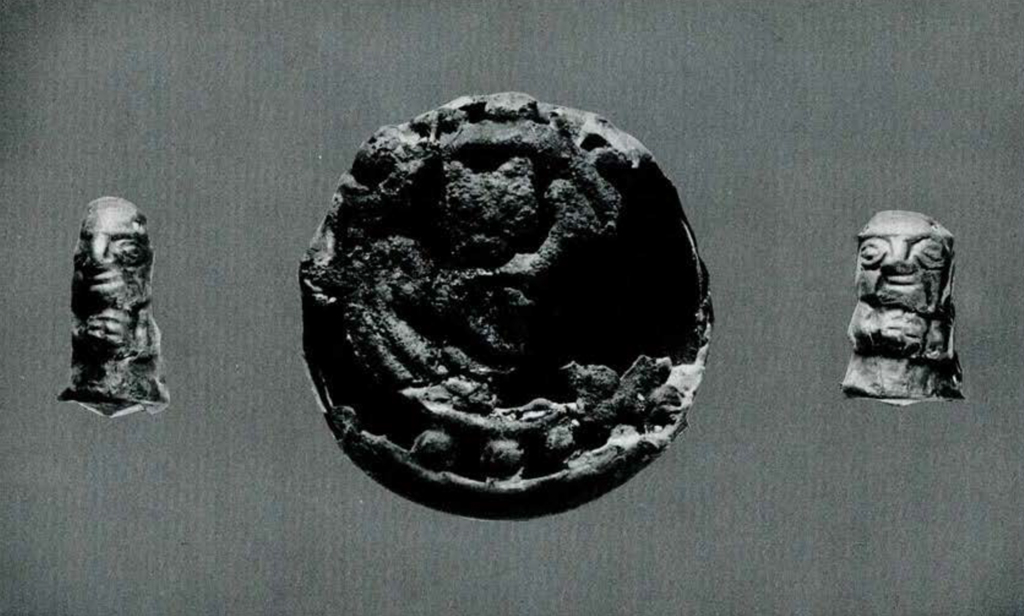MR . CHARLES L. CHANDLER has recently presented the Museum with three dainty metal objects from prehistoric Peru. These were excavated from ancient graves at Lambayeque on the low arid Pacific coast in northern Peru. This was the seat of the Chimu nation, one of the highest of the Peruvian cultures, although also one of the earliest. There is no method of dating this civilization and these objects, but the culture is believed to have flourished in the early centuries of the Christian era, far antedating the time of the more famous Incas of the Peruvian highlands who later conquered the Chimus. It was in this region that Pizarro first set foot on Peruvian soil and received his first impression of the quality of Peruvian civilization. He and the other Conquerors who followed him secured immense quantities of gold from the graves of the Gran Chimu.

Museum Object Numbers: 32-34-1 / 32-34-3 / 32-34-2
Image Number: 20364a, 20364b
Two of these objects, shown at the sides in Plate III in larger than natural size, are tiny human figures of gold. The metal is very thin, almost gold leaf, and the figures were probably made by the repoussé process of hammering the thin metal over a carved mould with a padded hammer. The section of each is semicircular, the back being open. The forehead curves back in hemispherical form, but the base is cut and turned back. Along the edges of each are four tiny perforations, indicating that the figures were sewn on to cloth as decorations. Probably there were many more of these on the garment. Each example shows a stylized figure without feet, with hands clasped on the breast. Each is about three-quarters of an inch high.
The central figure is a somewhat larger ornament of copper, one and five-eighths inches in diameter and three-eighths of an inch in thickness. The metal is, as commonly with copper, much oxidized, and the object therefore broken, although it has been repaired as well as possible. It resembles a small circular box with solid thin bottom and sides and perforated top, but was probably also an ornament, as there are small holes in the side for suspension. The perforated top, parts of which are missing, shows a feline figure, probably a puma or jaguar, an animal of great religious importance in ancient Peru. Head and tail are far out of proportion to the rest of the body. In one paw it holds an unidentifiable object. The peripheral ring of circles probably originally completely encircled the puma figure.
J. A. M .

